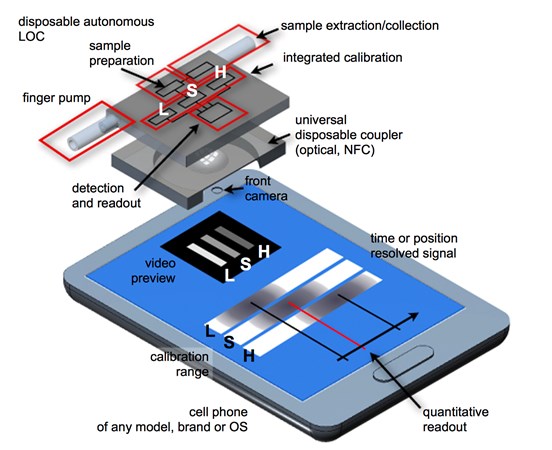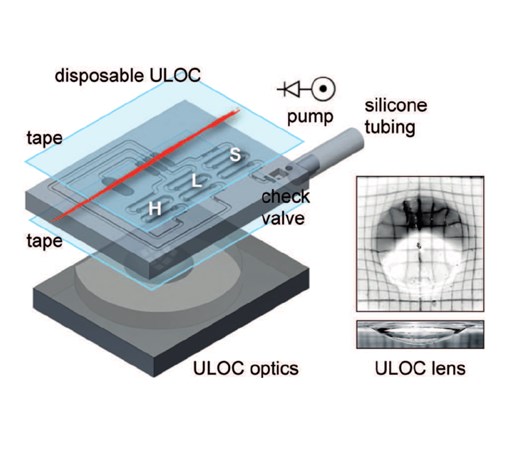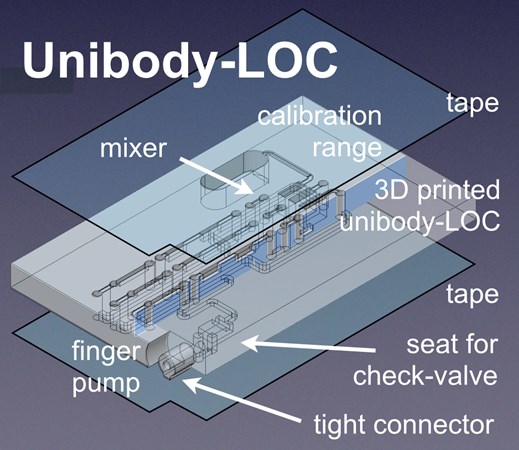Our activities entail optics and fluidics design, micro-fabrication including 3D printed optics and LOC, biochemical analysis integration, instrumentation and data processing.
Optical devices
We investigate optical principles and their integration within disposable LOC devices, with special focus on coupling to cell phone camera readout. Some examples are illustrated above.
Focusing at short distance from the camera surface is crucial to simplify LOC positioning, and not only demands refocusing but also adaptive focusing to support diverse cameras with the same disposable LOC design. One solution was to configure a sessile drop on a controlled surface and to operate it as a disposable varifocal lens.
ODL has also demonstrated a disposable optical coupler that uses cell phone screens as light sources to perform label-free angle resolved surface plasmon resonance (SPR) detection with the phone camera.
3D printed integrated optics allow us to configure disposable LOCs for universal coupling to cell phone cameras, using our unibody-LOC (ULOC) technology.
LOC systems
At ODL we develop low-cost fast-prototyping alternatives to classical LOC fabrication of PDMS on glass devices. Replacing costly SU-8 templates by versatile stereolithography (SLA) 3D printed templates we are able to produce prototypes for ~0.5 US$, with unlimited number of 3D features for the same cost and at typically 20 min/prototype.
Further simplification can be achieved by transferring all complex fabrication tasks to the 3D printer and collecting all functional features in a single monolithic printout (unibody-LOC, ULOC), which hosts functionalization, transport and actuation features.
Low surface roughness, achievable with SLA printers, enables fabrication of arbitrarily long and geometrically regular open channels, which can be simply sealed with adhesive tape. Printing times of 10 min permit several optimization cycles/day.
ULOC devices have been configured for paper fluidics and classical LOC formats, can integrate optics, finger pumps and check-valves in entirely disposable configurations.







